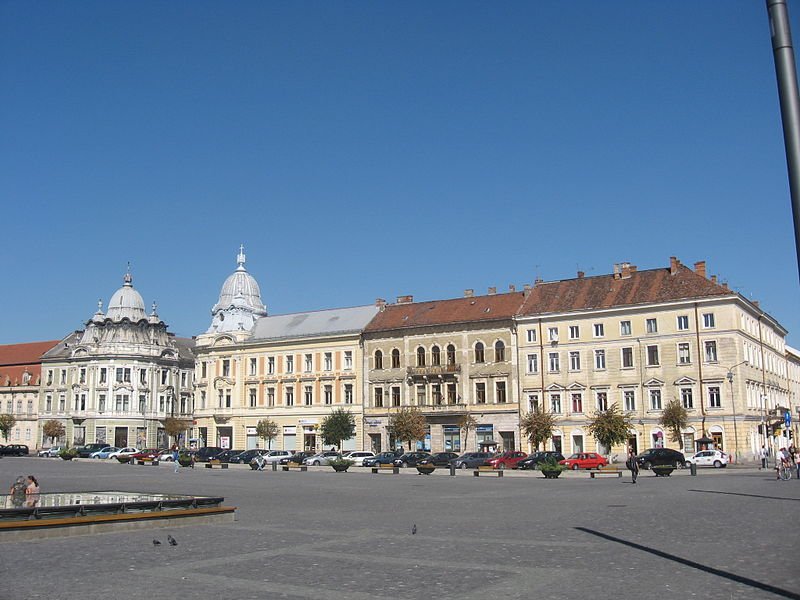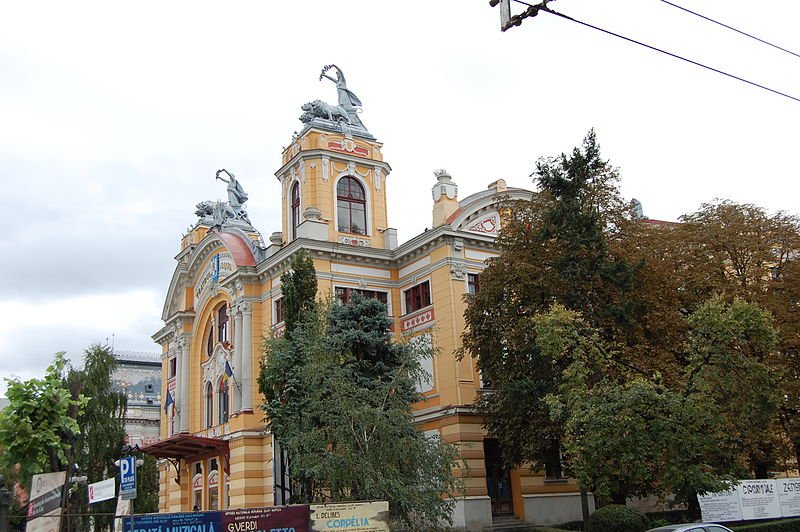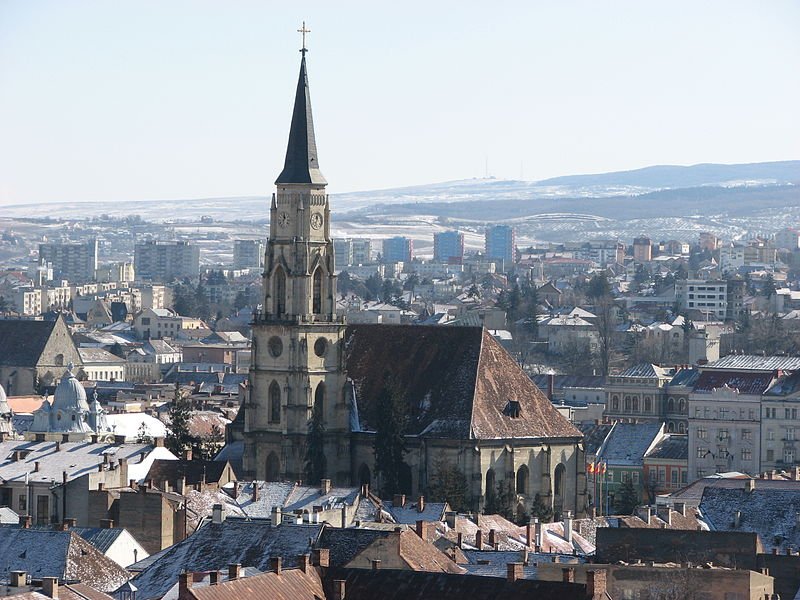 Cluj-Napoca, Romania
Cluj-Napoca, RomaniaSource: https://commons.wikimedia.org/wiki/File:Kolozsvar_Fo_ter_keleti_oldal2.jpg
Author: Istvánka

Cluj-Napoca (German: Klausenburg, Hungarian: Kolozsvár), commonly known simply as Cluj, is the fourth most populous city in Romania. Located in northwestern Romania, it covers 179.5 sq km (69.3 sq mi) and has a population of 306,000 people (2011 estimate). It is about equidistance from Bucharest, Budapest and Belgrade, each of which is over 400 km from Cluj.
 Cluj-Napoca National Theater
Cluj-Napoca National TheaterSource: https://commons.wikimedia.org/wiki/File:Teatrul_National,_Cluj-Napoca.jpg
Author: LuminitaM

More on Cluj-Napoca
Cluj-Napoca is regarded as the unofficial capital of Transylvania. It did serve as the official capital of the Grand Principality of Transylvania from 1790 to 1848 and from 1861 until 1867.Cluj-Napoca experiences a continental climate with warm, dry summers and cold winters. July and August are the warmest months, registering average high temperatures of 23°C (73°F). Coldest month is January, when the average low temperature drops to -6°C (21°F). June and July are the wettest months in Cluj-Napoca, each receiving 8 cm (3.1 in) of rain.
 Church of St Michael, Cluj-Napoca
Church of St Michael, Cluj-NapocaSource: https://commons.wikimedia.org/wiki/File:Cluj-Napoca_-_CJ-II-m-A-07469.jpg
Author: Cristian Bortes

The history of Cluj-Napoca dates back to Roman times. A milestone from the Roman period discovered in 1758 shows that the settlement of Napoca has been established since Roman times.
Cluj-Napoca was a site of rebellion during the Roman Revolution of 1989 which claimed the lives of 26 people and injuring some 170. After the fall of totalitarian rule, Cluj-Napoca was governed by Gheorghe Funar, whose 12-year tenure was marked by ethnic provocation against the Hungarian-speaking minority, resulting in a decline in foreign investment. When he was voted out of office, there was a turn around in economic growth.
Visiting Cluj-Napoca
You can reach Cluj-Napoca by train as well as plain. There are regular train services from Bucharest as well as other Romanian cities.You can also fly to the Cluj-Napoca International Airport (CLJ), located 9 km from Someşeni, receives flights from Antalya, Barcelona, Budapest, Constanţa, Dortmund, Heraklion, Hurghada, Frankfurt, London-Luton, Madrid, Milan, Munich, Pisa, Tunis, Valencia, Venice, Vienna and Zaragoza.
Places of Interest in Cluj-Napoca
- Cluj-Napoca Botanical Gardens
Officially the Alexandru Borza Cluj-Napoca University Botanic Garden, this garden covers 14 hectares and has over 10,000 plants. - Museum Square
Square with a number of historic buildings including the Franciscan Monastery, the Transylvania History Museum and the Obelisk of the City. - St Michael's Church
Church dating back to the 14th century and named after the Archangel Michael, the patron saint of the city.
 Latest updates on Penang Travel Tips
Latest updates on Penang Travel Tips

Copyright © 2003-2025 Timothy Tye. All Rights Reserved.

 Go Back
Go Back